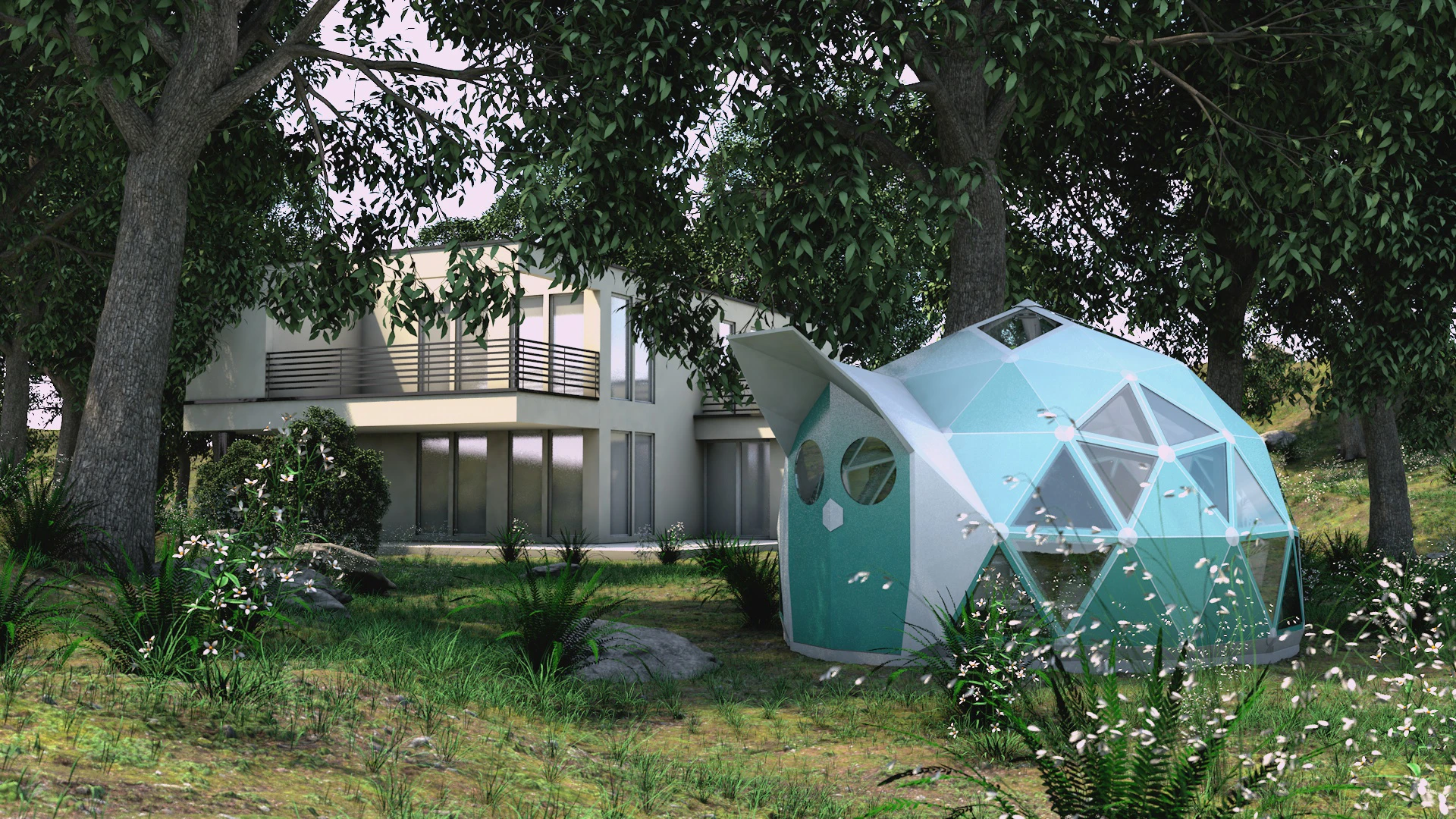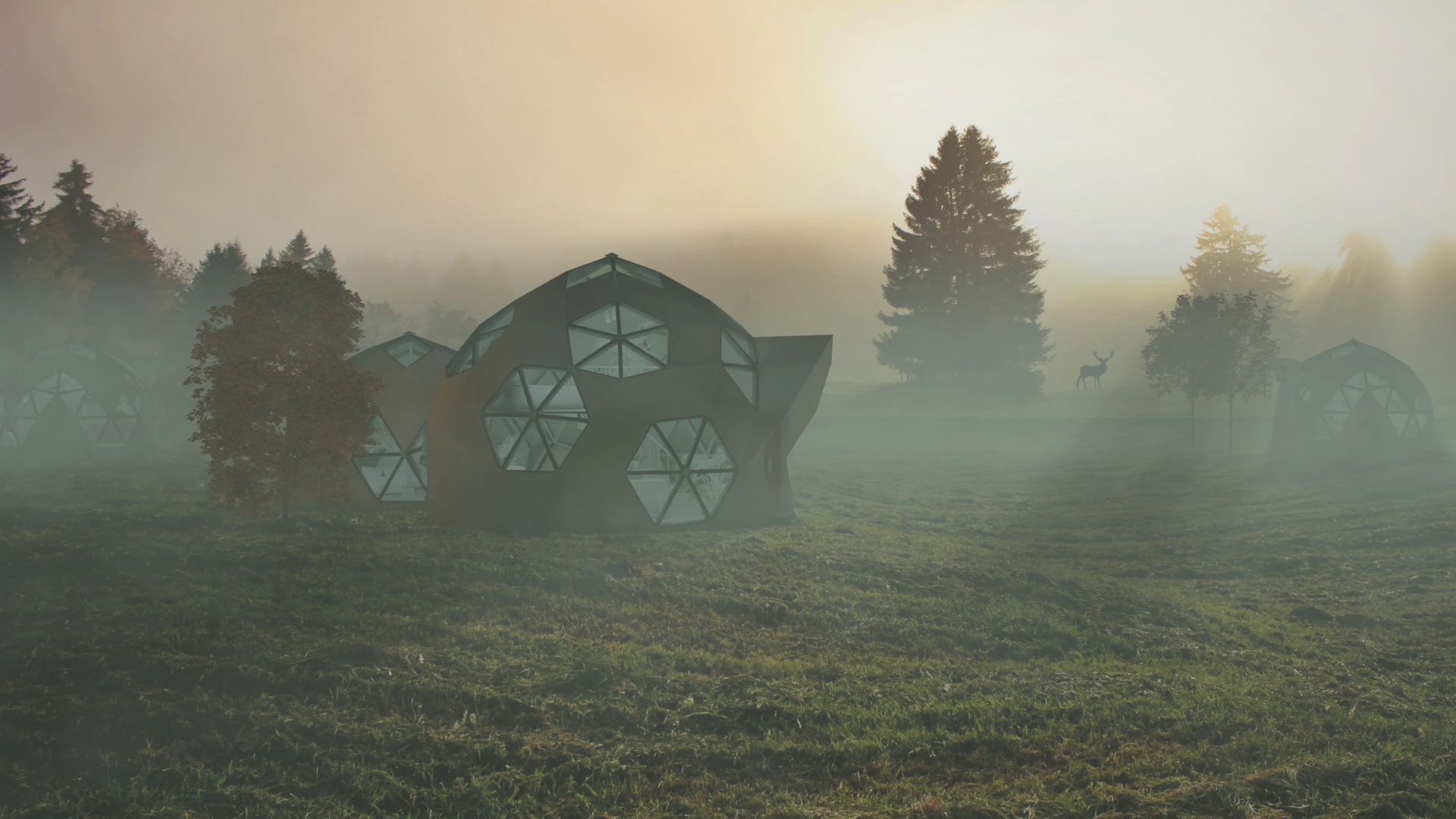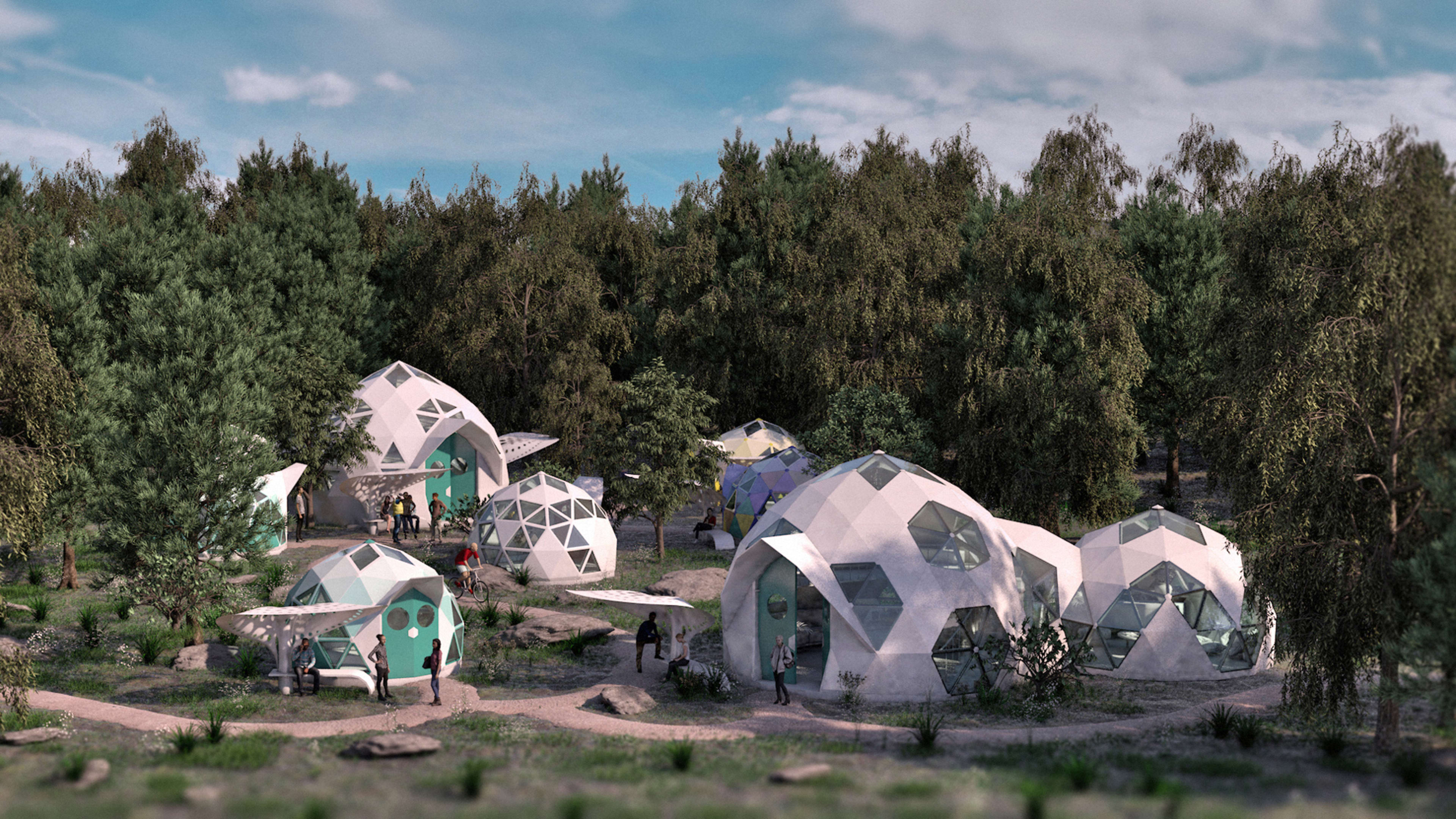In a world where wildfires and hurricanes are becoming more frequent, design for new housing would be smart to anticipate the climate disasters that are coming. So these new buildings aren’t made from wood or any other conventional building materials. Instead, they’re made from bioceramic—which can withstand disasters, and perhaps dramatically lower construction costs.
It’s the design of a startup called Geoship, which is using the material to build new dwellings in the form of a geodesic dome and has plans to produce both backyard cottages and full communities. It’s caught the attention of Zappos and is working with the company to build a small “village” of the domes in Las Vegas near the online shoe retailer headquarters. The plan is to offer them as free housing for some of the many people who are experiencing homelessness in the city.

The dome’s lightweight material has a long list of advantages, particularly in a world where the effects of climate change—and the increase in natural disasters it brings—become more apparent every year. The ceramic is fireproof up to 2,700 degrees Fahrenheit; in a fire, the house won’t burn. It reflects more than 80% of the heat from the sun, helping keep the inside cool in heat waves. The material is strong, and in combination with the inherent strength of the dome shape, should be able to survive hurricanes. It resists insects and mold. In a flood, it absorbs little water. In an earthquake, because of the building’s shape and the way that the panels chemically bond together, the house should stay standing. The startup estimates that the homes will last 500 years. If people need to leave a particular area, something that will become more likely as sea levels rise, the homes can be disassembled and rebuilt. In the future, if repairs are needed, the same material can be used again because the bioceramic acts like a glue and bonds to itself.
All of this, the company claims, can cost 40% less than traditional construction. The geometry shrinks the amount of material needed—a dome might use half the material of a two-story traditional house of the same square footage. The ceramic can be made primarily from phosphate, which can be recycled from wastewater. The panels, made in a factory, can be delivered in a shipping container and assembled on-site in days, saving labor costs. “Essentially, it’s like Legos going together,” says Geoship founder Morgan Bierschenk.
Inside, the homes are filled with natural light. Fresh air from vents at the top and the bottom of the dome helps cool the house naturally. Insulation, made from the same ceramic material filled with air, helps make the home “passive” so it can be heated and cooled without external energy. The materials don’t create any indoor air pollution. (The company also touts much more questionable claims about the design’s ability to “optimize the electromagnetic environment” and its alignment with Vashtu shastra, a traditional Indian theory of architecture.)
The spherical, soccer-ball-like structure of the houses was popularized by the 20th-century architect Buckminster Fuller. Fuller envisioned the design as a solution to the housing crisis after World War II, but they never caught on. Bierschenk believes that new materials make the architecture more feasible now.
Bierschenk took a circuitous path to entrepreneurship: After working as an engineer at Intel in his early twenties, he left to travel the world, then returned with hopes of building a small house for himself, though he realized he couldn’t afford the cost of land. He restored a sailboat instead, and spent more years traveling. In 2011, he moved to Iceland to work with Wikileaks and on technology to help enable “liquid democracy,” a more direct form of government and alternative forms of currency. A few years later, he returned home to help his brother build a house from reclaimed materials. “During that process, we started to question why we’re still pounding nails in wood, like people were doing 100 years ago,” he says.
They recognized some of the advantages of the geodesic dome, which is inherently strong and efficient. In their research, they also learned about a ceramic composite that had originally been developed at Argonne National Labs for use in shielding nuclear waste. They realized that the material could be used to form triangular panels in geodesic domes.

To help further save cost, the company plans to help communities form community land trusts. “We think to really solve the affordable housing crisis you have to have some way to kind of transcend the single-family home with land ownership and take land speculation out of the picture,” he says. The startup is building a platform that groups of people can use to collaborate on the design of a village of the homes, and will then walk groups through the process of setting up a community land trust. It also plans to create a cooperative ownership model, and customers will ultimately own between 30% and 70% of the company. “This fundamentally reshapes the home building industry, and capitalism itself,” says marketing copy on the Geoship website. “Our success becomes your success.”
Zappos wanted to help address the homelessness crisis around its downtown Vegas headquarters (CEO Tony Hsieh also lives nearby in a tiny village of Airstream trailers) and saw the potential of the technology to help build durable, affordable housing. The company is helping fund the production of prototypes. “The product is rated for a long, long time and needs very minimalistic maintenance, whereas the problem with RVs, trailers, or tiny homes, it’s a lot to maintain,” says Tyler Williams, Zappos “fungineer” and director of brand experience. The companies will release more information about the project at a later date.
It will be at least two years, Bierschenk says, before Geoship homes are in production. The company is fundraising now for its first production plant. If everything moves forward as planned, it would be a win for the environment. The startup estimates that the embodied energy in one of the homes, or the amount of energy used to produce the materials, will be at least 20 times less than a home built with conventional materials. The ceramic itself can sequester CO2 from the air; the company is calculating whether the homes could potentially be carbon negative.
Recognize your brand’s excellence by applying to this year’s Brands That Matter Awards before the early-rate deadline, May 3.
